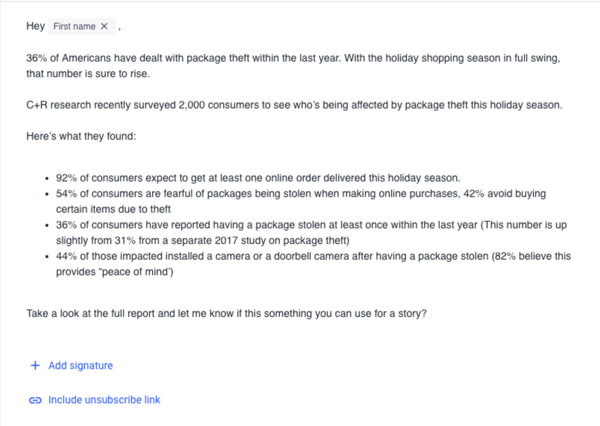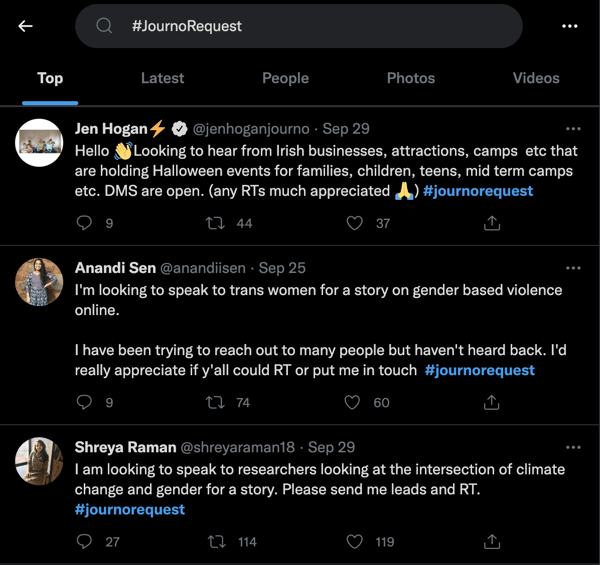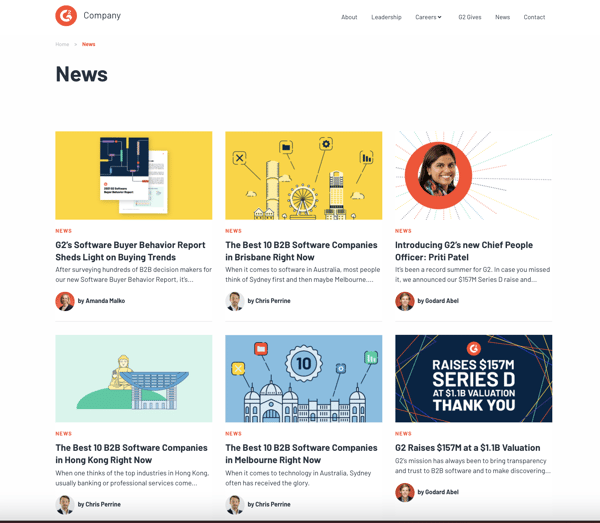October 8, 2021
 by Ninisha Pradhan / October 8, 2021
by Ninisha Pradhan / October 8, 2021

We’ve all heard that there’s no such thing as bad press.
But if you can avoid bad press, you definitely should. Earning good media coverage is hard work, but you can successfully get the right messages across with the right knowledge. As media outlets continue to transform information delivery, knowing the ins and outs of gaining media coverage becomes more important.
While press release distribution software does help communications specialists spread the word across to an organization’s target audience, media attention can be gained through a multitude of ways.
So whip out your safari outfit. We’re going on a hunt – for the best media coverage.
Media coverage is content pitched by public relations (PR) professionals and produced by reporters and writers to discuss your brand or client.
Getting the word out with press releases, pitches, and press conferences seems intimidating, but remember that journalists and reporters are people just like us. They have busy schedules, and only have time for quality content and extraordinary stories.
There are four types of press coverage, and the lines between them are blurring as journalists begin to implement omnichannel marketing plans.
The four types of media coverage are:
The face of television has changed over the years, with many watching their favorite shows and consuming the latest news stories through over-the-top (OTT) media services.
Nevertheless, television, as we know it today, is an incredibly popular form of visual mass media. Gaining coverage through this platform requires heavy investments in advertising or a brand should’ve garnered enough notoriety to be featured on television.
An audio-only form of media, radio is a cost-effective medium that businesses of all sizes can explore. Radio has a wide reach and isn’t limited to road trips in the car. Today, most radio stations have a presence online, bringing old-school frequency waves to the new generation.
With the world going digital, it may appear that print is going out of fashion. However, print media is still relevant for generating media coverage. Newspapers and magazines are actively consumed by large sections of society. Today, print has gotten a digital makeover, taking bylines and editorial pieces to the internet.
Perhaps the most lucrative medium for obtaining media coverage, the online medium has given individuals and organizations alike the opportunity to go viral at the drop of the hat. Reshareability has become far more prevalent with the aid of online platforms.
Beyond these different types of mediums, media coverage can also be classified into the following:
While it may seem like the media coverage happens overnight, a lot of time and effort is invested behind the scenes. For every trending story or press release junket that we see online, several hours of strategy and relationship-building are involved that span days, weeks, or even months.
Gaining good media coverage is like getting a golden goose. Much like a hunt, media specialists can capture media attention by sitting still and waiting for their target to approach them, or by actively chasing it.
Depending on the time available and the business’ media goals, PR and communications specialists can gain widespread press coverage in two different ways: engaging proactively or reactively.
A proactive approach involves actively creating and disseminating engaging content in the form of press releases and social media announcements or organizing press conferences for media members as and when a newsworthy event occurs. This approach also involves hunting and targeting the right reporter or media publication for your journalistic needs.
Think of any proactive strategy as a chase in a crowded forest. For any successful hunt, you need to observe the targets’ (or, in our case, journalists’) tracks and behavioral patterns, lay down the bait, and take a shot. Gaining media attention follows a similar ideology.
Communications specialists need to leave a trail of goodness in the form of engaging content. They also need to deliver this compelling content in communities or spots where reporters and media publications usually make the rounds. This can be done through social media networks, search engine results pages (SERP), or other media channels. At the end of the day, journalists are constantly seeking information and newsworthy content.
A few ways businesses can proactively reach journalists and gain quality press coverage:
Before anything, start connecting with journalists and thought leaders who align with your PR roles and responsibilities. For example, if you’re representing a sports team, connect with reporters from ESPN, not Vogue. Follow relevant journalists and bloggers on Twitter, comment on their LinkedIn posts, and start learning about what makes them tick.
If you’re really looking to go above and beyond, talk to them in person. This may seem a little over the top, but meet them for a coffee and try to build an authentic professional relationship if you’re in the same area. Human interaction is still the most effective way to make connections.
Networking helps avoid the often ignored cold outreach. After you have formed a trusted working relationship, you can pitch your content more comfortably. Reporters want help, and when you know them, you can make sure your pitches are catered to their needs.
Speaking of pitches, let’s look at another crucial part of any public relations program: a pitch.
Most pitches are sent to a journalist through a clear, concise, and personalized email, which might result in a communications specialist gaining earned media on the desired topic.
The goals of a media pitch are to get website traffic, receive a press mention, boost revenue, and get backlinks to online content.
Learning how to write a pitch isn’t easy, but once you have your own process nailed down, you’ll find that perfecting your pitching methods is crucial to getting replies, and eventually, media coverage.
A pitch should have an attention-grabbing subject line, followed by three paragraphs. The first paragraph needs to be personalized and concise. The second should include some original research. And the last should summarize your main points and conclude with a call to action (CTA).
Love them or hate them, press releases continue to serve today’s news on a platter. Press releases can secure media coverage when they’re eye-catching, cover a unique angle, provide information that hasn’t been previously reported, and are tailored to the reporter. Pretty tall to ask for something that’s around 500 words, isn’t it?
Learning how to write a press release that clicks and is interesting to read is the key to a successful public relations campaign. It also serves as a good skeleton for reporters to build a story on. Your press release should make the journalist’s job easier, not harder. Perfecting the ins and outs of making journalists want to cover your press release takes time, but, they result in highly successful PR campaigns when done right.
If you haven’t yet developed personal relationships with the media, you can use press release distribution software to mass mail your press release. That way, it can reach a large number of news media outlets, and you can expect a good percentage of them to cover your press release.
You should hold a press conference if, and only if, your event is newsworthy, timely, and relevant. When overused, press conferences lose coverage, and reporters lose trust in your public relations abilities.
The easiest way to break down the preparation for press conferences is by dividing your plan into three stages: before, during, and after. That way, you can focus your attention on one moving part at a time instead of trying to juggle many things at once.
Most of the work is already completed before the press conference begins, with the most important part of the preparation being media outreach. Create an intriguing press conference topic for the media to feel the need to attend your event. In short, give the press FOMO (fear of missing out) to get that media coverage.
Lastly, if the topic isn’t interesting and exciting, you probably shouldn’t hold a press conference in the first place.
A reactive approach is the equivalent of sitting still and waiting patiently for the right target or lead to come to you. Journalists are always prowling for a good story. Depending on their editorial calendar, they look for a specific type of story from time to time.
If public relations professionals recognize a good fit between what the reporter wants to cover and the story a business has and wants to spread, they can respond to a journalist’s request for specific content and contribute to a working story. This contribution could be a full-fledged story, a quote from an industry expert (an existing customer or a member of the C-Suite), or a statistic obtained from an internal survey or a study.
Media coverage services like Help a Reporter Out (HARO) are a great way for businesses to glean information on what journalists are looking for, and respond to their requests accordingly. In these types of services, inquiries from reporters and freelance journalists are collected in one place.
A comprehensive database of sources is made available to these journalists. Businesses can contribute to the research process or provide a relevant story by responding to these inquiries. This entire process results in organic media coverage, making it a win-win situation for both parties.
With this approach, it’s crucial to respond as quickly as possible since many businesses will be connecting with a reporter to gain media coverage out of the exercise.
It’s also vital to remember that this process shouldn’t be treated like a bulk purchase from a wholesaler, no matter how tempting it may be. You may have plenty of journalist requests that seem ripe enough to pick, stick to selectively responding to the ones that are a good fit for your brand and industry. This prevents your messages and pitches from being diluted, and you build a strong, consistent relationship with the said journalist.
Here are a few media coverage services you should know about:
Another good practice is to keep a tab on Google Alerts for relevant mentions within your target industry or niche. For instance, monitoring when your direct competitors are making a splash in the news can present a window for your business to actively participate in the discussion.
Another example of where setting up alerts can be beneficial is when customers or experts in an industry are talking about you, or rather, a solution you offer to the market. Tracking trends and what people within relevant communities are saying is a great way to plan your story in advance, so when reporters cover the topic, you have content ready to be published.
Regardless of the method you choose to get media coverage for your business, it’s important to plan your PR activities in advance and:
Journalists don’t have time for everyone.
While media coverage primarily depends on how interesting a piece of news is, it also has a lot to do with how many reporters get a chance to even glance at your story. And while you can somehow force your story into a journalist’s hands (please don’t), you can’t force them to publish it.
You could read Dale Carnegie’s book on “How to Win Friends and Influence People”. Or, you could follow some of these tried and tested tips to help you get your word across effectively.
If you need to know a family recipe, you would ask people in your immediate family. You could search for a recipe online, but no one knows how to make that secret sauce the way Mama does.
Bulk emailing journalists only when you have a potential story in your hands isn’t the best approach. For starters, journalists don’t know you or what your business does, and they don’t have the time to check your organization’s Wiki notes every time they receive a request. Additionally, countless other companies adopt the same tactic for cold outreach. This makes your email, however well-intentioned, the proverbial needle in a haystack.
Media relations is a practice that should be followed by every organization regardless of size or budget. Building connections with journalists isn’t only impactful but also comes at no additional cost. By being on a first-name basis with to a reporter, you can get insight on what they’re planning to cover, gain access to their editorial calendar, and inadvertently become the first person they call when they need a story or information on a topic your business is well-equipped to answer.
Publications and media outlets are barraged with press releases and inquiries on a daily basis. Everyone believes their story will become “breaking news,” but publications need time to go through large piles of news releases before coming to the same conclusion.
While PR professionals may see some success with releases being sent directly to publications, a better approach would be to target journalists directly. Finding reporters who cover your niche and approaching them (with a customized pitch) can improve the odds of your story being read by the gatekeepers in the media.
It’s important to note that pitching to journalists directly won’t guarantee your story will be picked up. However, it does increase your chances of getting a response from the right people.
Freelance journalists who’re not bound by any publication offer a few significant benefits:
Journalists who work for a publication need to adhere to that publication’s editorial calendar. Let’s say you have a story about a tech event organized by your company. It seems like a good, timely piece of news to cover. The publication might, however, have planned to release a series of features on emerging startups, and your story, while good, isn’t relevant to the theme. Similar restrictions don't bind freelance journalists. They can cover a wide range of topics within their beat, as long as the stories are newsworthy.
Freelancers constantly work on many stories and ship them out to different publications. As a result, your story gets picked up by a wide range of media outlets instead of just one. Not only does your story enjoy a healthy amount of media coverage, but its reach also increases significantly.
In any public relations activity, relevancy is the key to positive media coverage.
The same principle applies while pitching to journalists. Reporters usually write about a particular beat or are subject-matter experts. Pitching a piece about an apparel company to a reporter who exclusively covers the Software-as-a-Service (SaaS) space wouldn’t necessarily result in the publication of a story.
While it might be tempting to contact as many journalists as possible, targeting reporters who write extensively about your industry or product offering increases your chances of a story being picked up.
Some other best practices you can follow:
A salesperson wouldn’t pitch a single customer and then sit back and relax, would they? The key to a successful conversion is persistent effort. PR professionals need to actively pitch to different journalists and publications regularly. Additionally, if they can respond to multiple HARO requests or inquiries, the chances of a mention or a published story are significantly higher.
You should be careful, though — answer as many requests as you can without diluting the effectiveness of your response.
If journalists approach you for a story, information, quote, or anything similar that could be included in their coverage, don’t make a blunder by offering something bland or generic. Requests don’t come in every day, so treat every query as an opportunity to get your business’ voice across to the public. Offer a different perspective, exclusive data, a timely quote from a C-level executive, or references to help journalists with their stories.
Sometimes, these requests might seem a little vague and require additional information to truly grasp what the reporter is looking for. In such cases, asking for more context is always a good idea. This shows you’re enthusiastic about contributing to a newsworthy story, and journalists will keep you in mind for their next piece.
Pitching is crucial to any PR strategy. That said, a cold outreach might turn off more reporters than you’d like.
We know journalists get several inquiries and pitches daily. Sending a pitch letter addressed to the wrong reporter or publication screams sloppiness. Imagine getting an invitation to a party, but your name isn’t included. You’d think you got the wrong invitation, or worse, that you aren’t important enough to receive a personalized invite.
Personalizing the content of your story is a good place to start. It also helps to personalize the “little things” like the subject line of your pitch email, the formatting of your media pitches, and the hook of your pitch.
 Source: Prowly
Source: Prowly
With so many trends on social media, it’s no surprise that it has become the watering hole for journalists across the globe. Reporters keep up with new trends on social media in hopes of finding their next big story. If your business posts newsworthy content on social media, chances are a journalist could stumble upon your story and cover it themselves. Businesses can also find relevant journalist requests online with the help of the hashtag #journorequest and respond directly to each query.
 Source: Twitter
Source: Twitter
Social media platforms like LinkedIn or Twitter are also a great way of getting in touch with prospective reporters. Journalists usually have their work portfolios linked to their profiles on the internet or their social media handles. It’s a good way to research their work and understand their background before reaching out to them.
All the big news headlines we read or hear are the trending ones. With the help of media monitoring, brands can track what topics are currently trending and craft stories on similar topics. Another option is to continuously monitor a topic (one that’s highly relevant to your business) and notice when the number of searches for that topic or related searches spikes up. This allows companies to pitch their stories to journalists interested in covering such topics as they’re trending online.
Reporters work on a tight schedule. If someone approaches you for a story, it’s prudent to send any useful information and assets. Missing multimedia files, infographics, or other pertinent press material in your media pitch spells disaster. If journalists can’t find all the information to validate or build on a story, they’ll skip your pitch and move on to the next.
Gifts from sources may be construed as bribes, and are frowned upon. Journalists don’t entertain the notion of presents since their job is to remain neutral and unbiased.
However, in specific industries like fashion or retail, where the final product is a commodity that is consumed or utilized, product samples won’t get in the way of journalistic integrity. If you’d like a journalist to check out a new product or service in exchange for an honest review, it’s okay to offer them a small sample or a glimpse of how the commodity performs.
Keep in mind though that offering product samples doesn't work all the time and especially across all industries. Journalists will have to be critical about the product they're reviewing.
With so many journalists hunting new stories every day, it’s a great idea to have and maintain a newsroom on the company’s webpage. Inbound PR has become more widespread than ever.
Having a newsroom with major organizational updates (a round of funding, an acquisition, or a company expansion) serves as a skeleton for potential news coverage several publications might pick up. Plus, it’s an excellent way of generating more traffic and appearing on search engines, contributing to your search engine optimization (SEO) strategy.
 Source: G2
Source: G2
You may not even have to approach reporters if they come to you for their next scoop. Newsrooms are an excellent inbound PR strategy.
Reporters love something exclusive. Try to provide a story that hasn’t been covered before. Even if the story doesn’t seem incredibly remarkable, add value to your content with the help of data or research that hasn’t been reported by any other media outlet.
One problem journalists face is getting a primary source of information for a statistic or a quote. If your company does in-house research, it could contribute to a story. Include this in your pitch. Reporters always appreciate receiving new and timely information from a primary source.
We all know that one person who’d involve themselves in every story. This person is the human equivalent of newsjacking. Newsjacking is a common content marketing strategy and a clever technique for getting a news release going.
If there’s a trending news item or a viral social media post, companies can bring their brand to the table if they see an opportunity to get their story included in the larger discussion. This is a great tactic, especially when you’re struggling to come up with something newsworthy.
If you have noticed your competitors in the spotlight lately, investigate which reporters or media outlets are covering them. This means that the solutions offered by businesses like yours are trending, and the chances of a publication covering your story are also significantly higher.
Never forget the power of a good origin story.
Journalists are more inclined to cover a company with an interesting origin story. While the products and services are undoubtedly your business’ raison d'être, it’s the motivation and chain of events that culminate in this idea to draw more attention. It’s important to work with the company’s co-founders and product team to craft a compelling backstory with details about the company, how it all started, the ups and downs, and what’s next for it.
Take this as an opportunity to create your own cinematic masterpiece. Ensure that any story your company crafts and sends is, first and foremost, factually accurate, and second, not exaggerated.
To create a compelling narrative, don’t stray too far away from the actual picture.
If your company receives coverage, make the most of it by resharing it on different channels. The more you promote your own story, the more likely another publication will stumble upon it and later report on it. Since journalists are always looking for interesting coverage, the fact that another journalist has already covered your story makes your business far more potential to engage with.
Further, boost your coverage by making industry experts or influencers in your space reshare your story. This requires building a solid influencer network, it's a good idea to tap into that community if you have done the groundwork and steadily built one over time.
All stories have a short shelf life, so it’s crucial to get as much out of your media coverage as you can before it becomes outdated.
Media coverage is often associated with brand awareness. While media plays a big role in brand perception, media coverage can be a powerful tool for gaining customer trust and loyalty. Seeing a company being portrayed as an expert in an industry or a particular field can influence a potential customer to check out that business’ products or services.
Media coverage is like the Pied Piper: playing a tune that the masses will listen to and follow. Use this power responsibly.
Creating a PR plan is the first step in ensuring quality media coverage. Learn more about creating a PR strategy.
Ninisha is a former Content Marketing Specialist at G2. She graduated from R.V College of Engineering, Bangalore, and holds a Bachelor's degree in Engineering. Before G2, Ninisha worked at a FinTech company as an Associate Marketing Manager, where she led Content and Social Media Marketing, and Analyst Relations. When she's not reading up on Marketing, she's busy creating music, videos, and a bunch of sweet treats.
If you’re still relying on Google Alerts, manual searches, or disconnected spreadsheets to...
.png) by Tanuja Bahirat
by Tanuja Bahirat
The modern-day internet user is spending 142 minutes per day on social media.
 by Kevin Reis
by Kevin Reis
Organization is at the core of a strong social media strategy.
 by Alexa Drake
by Alexa Drake
If you’re still relying on Google Alerts, manual searches, or disconnected spreadsheets to...
.png) by Tanuja Bahirat
by Tanuja Bahirat
The modern-day internet user is spending 142 minutes per day on social media.
 by Kevin Reis
by Kevin Reis


